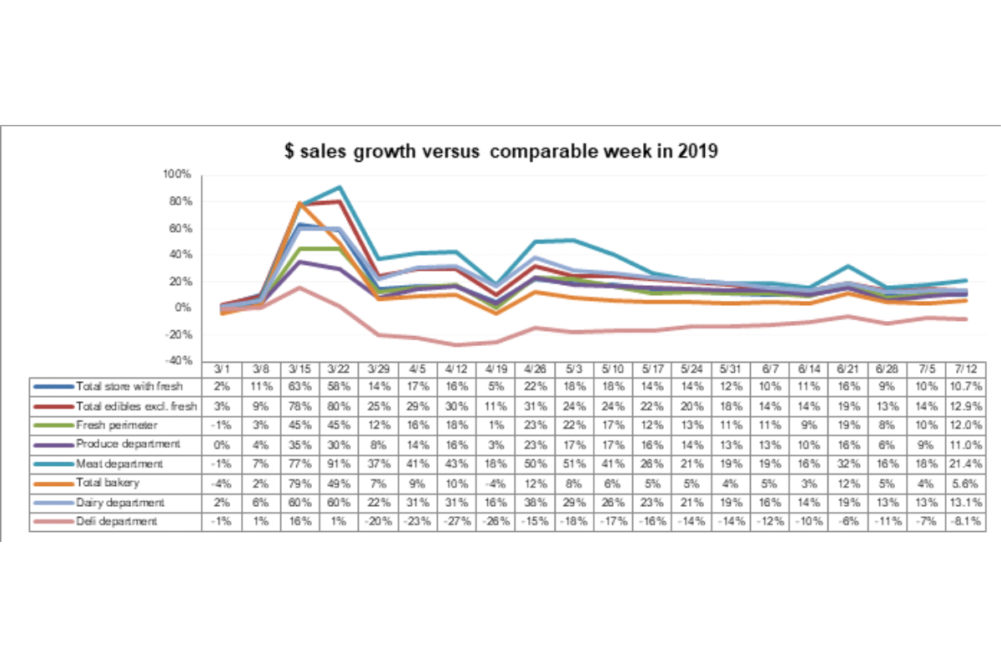SAN ANTONIO – The week following the Fourth of July holiday, the fresh perimeter outperformed the holiday week. According to the latest data from 210 Analytics and IRI, the total fresh perimeter experienced a 12% jump in sales over the same timeframe in 2019, compared to a 10.3% gain the week ending on July 5.
“Everyday demand remains a bit of a rollercoaster ride with the virus having much of the control as to how market forces develop,” said Jeremy Johnson, vice president of education for the International Dairy Deli Bakery Association (IDDBA). “The reclosing or reduction in capacity of restaurants in several states along with rising concern over the virus has consumers flock back to grocery stores once more. But at the same time, consumers tell us meal planning and scratch cooking is becoming much harder after four months of quarantine cuisine. We have a big opportunity to solve not only the dinner dilemma but all meal occasions with varied and convenient meal solutions involving dairy, deli and bakery.”
The deli department saw a continuation of mixed performance, coming in at 8.1% below the same timeframe in 2019. Deli cheese sales were up 11%, deli meat sales were up 9.2%, and deli prepared was down 20.3%.
“Consumers are looking for some help in the kitchen after months of scratch cooking,” said Eric Richard, industry relations coordinator with IDDBA. “Pre-packaged deli-prepared offerings provide a great deal of value, variety and convenience and consumers are re-engaging a little more each week.”
The meat category rose above 20% dollar sales gains for the first time in several weeks, coming in at 21.4% above 2019 sales. Dollar wise, lamb (up 38.9%), beef (29.4%) and pork (up 23.5%) were the top performing meats. Chicken was up 11.2% and turkey was up 17.6%.
“Pork and beef production continue to exceed year-ago, up 12.1% and 2.1%, respectively. A 10% year-over-year increase in hog slaughter drove the sizable increase in pork, with weights contributing the balance,” said Christine McCracken, executive director of food and agribusiness for Rabobank. “Heavier carcass weights more than offset a slight (-0.8%) drop in fed cattle slaughter. Chicken production moved lower again this week, as slaughter levels continue to reflect the cuts taken this spring and higher weights offering a limited offset. Recent increases in weekly chick placements (+1% year-over-year) will result in higher production beginning in this fall and may weigh on prices in late third or early fourth quarter of this year.”


